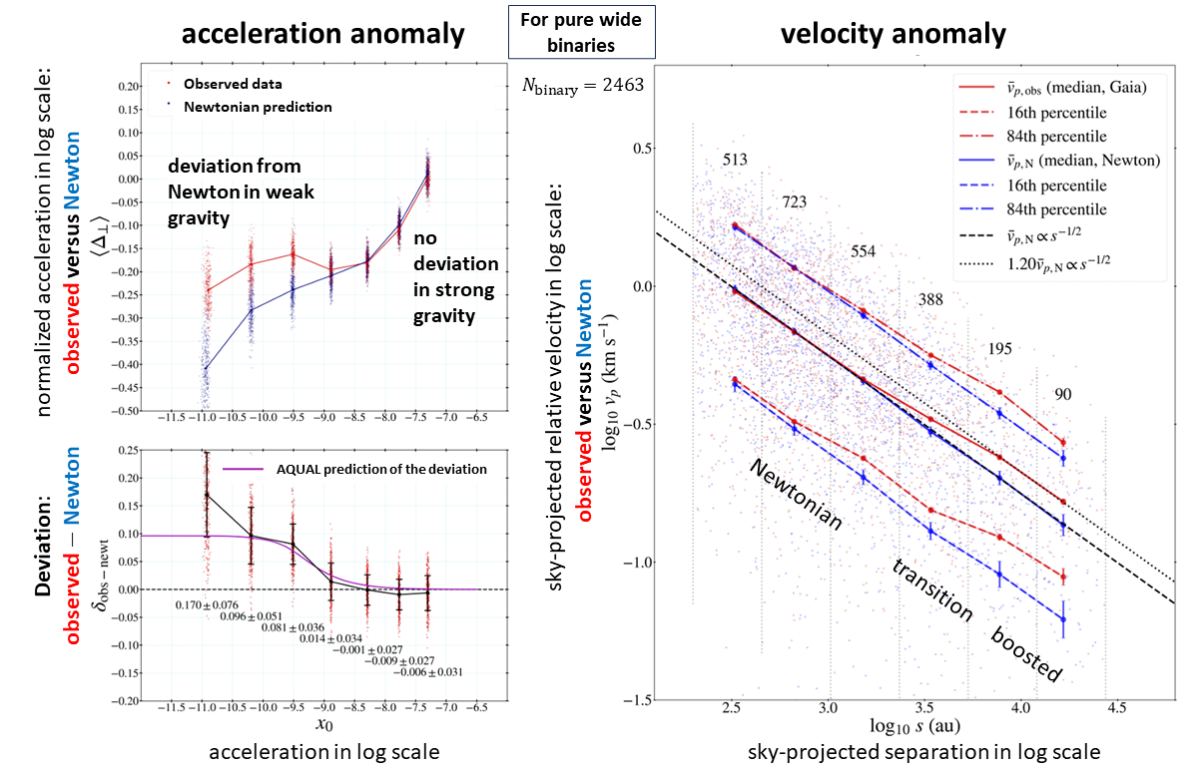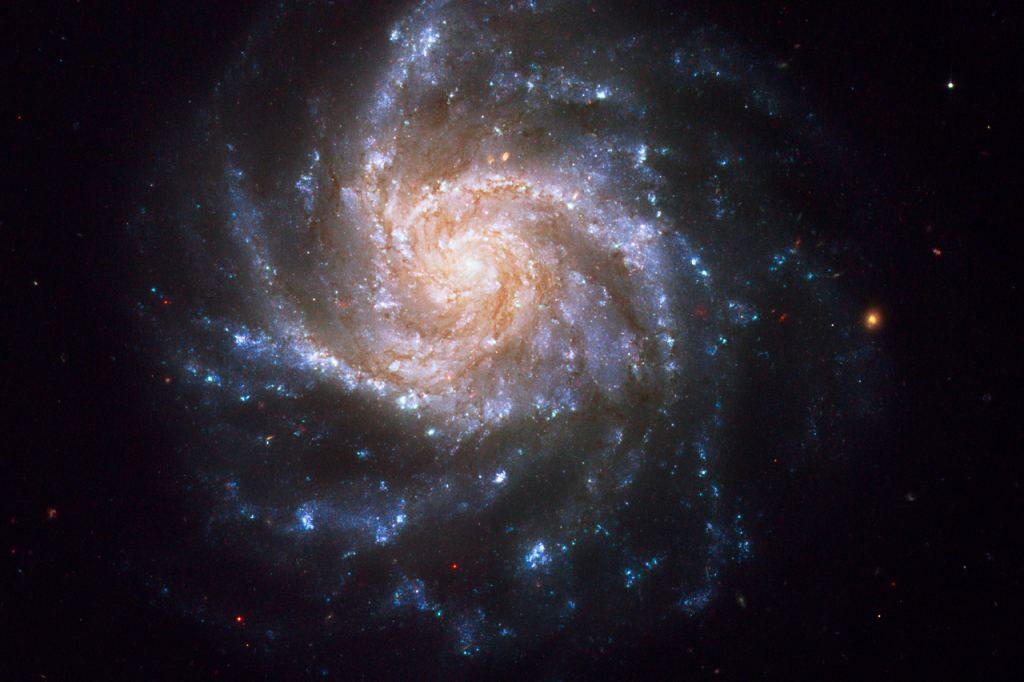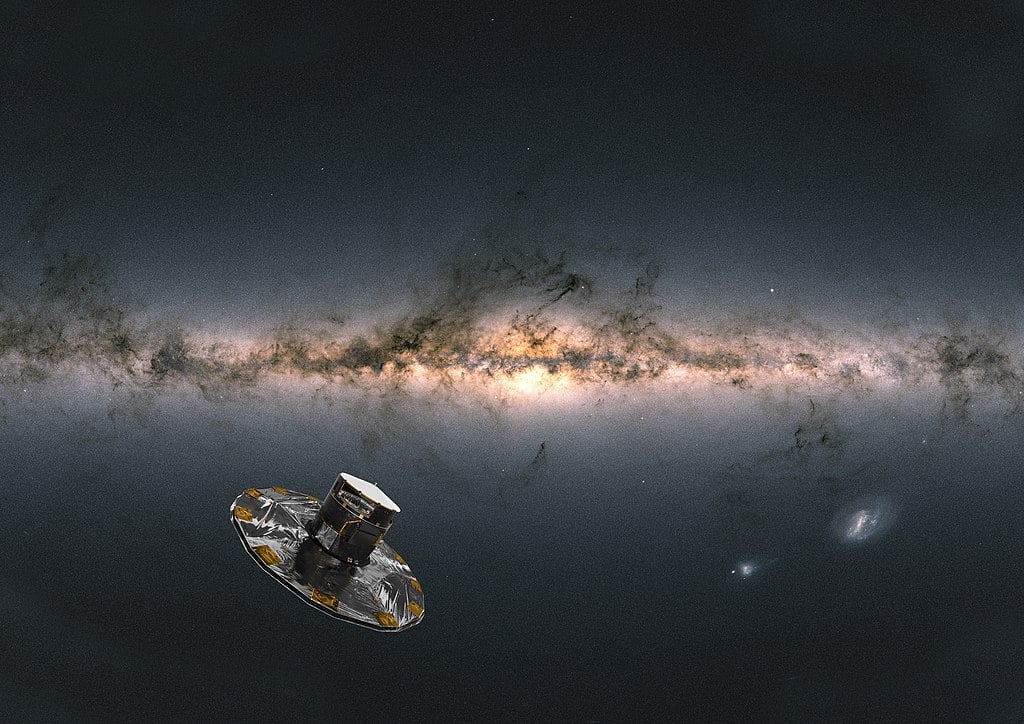The term dark matter was coined back in 1933 and since then, the hunt for it has been well and truly on. However, the concept of dark matter was to describe anomalies from observation for example the rotation of spiral galaxies and the data from gravitational lensing. An alternative soljution is that our model of gravity is simply wrong, enter MOND, Modified Newtonian Dynamics. A new paper just published explores wide binary stars and looks to see if it supports the MOND model.
Study the rotational velocity of spiral galaxies at different distances from the centre and you might be surprised. You would expect the rotational velocity to decrease with increasing distance from the centre, in reality we find that it remains the same with distance or even increases. Take into account our current model of gravity and it suggests that some unseen mass encircles the galaxy aka dark matter.
MOND as an alternative model was first published in 1983 by physicist Mordehai Milgrom. The model was proposed to explain stellar motion in galaxies without dark matter. Milgrom theorised that the gravitational force varied inverseley with the radius as opposed to the inverse square of the radius. The model explained the movements of stars in the outer region of galaxies without the need for dark matter.
Another observational discrepancy was reported in 2023 during a study of wide binaries. It seemed the orbital motions of binaries experience larger accelerations than Newtonian gravity predicts. Taking into account the effects of dark matter still does not resolve the equations. An opportunity therefore arose to explore wide binaries and the MOND model and, given that wide binaries are at the perfect distance for MOND effects to be detectable, it was an excellent test bed.
The sudy was carried out by Kyu-Hyun Chae, professor of physics and astronomy at Sejong University in South Korea. Using the European Space Agency's Gaia telescope Chae gathered new data of 2,463 wide binaries, targeting those that were unlikely to be host to unseen companions. He then applied two algoritms to test the MOND model of gravity.
Both algoritms produced results that were consistent with MOND predictions for wide binaries. It should be noted that MOND only seems to be required for stars with component separations of about 2,000 astronomical units (1 astronomical unit equates to the average distance between the Sun and Earth.
 Universe Today
Universe Today


